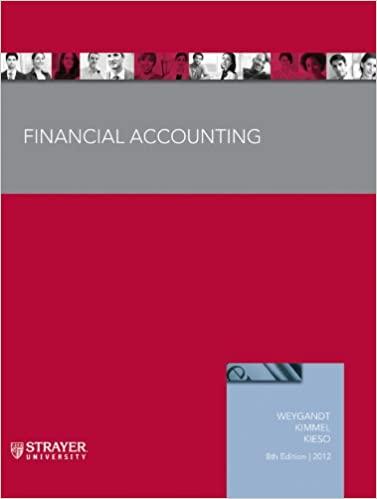Comprehensive Problem On July 31, 2020, the end of its most recent fiscal year, Elizabeth River Business Consultants' postclosing trial balance was as follows: The company engaged in the following transactions during August 2020, and adjusts its accounts monthly: Adjustment data: 1. Adjustment of prepaid insurance for the expired portion. 2. Adjustment of prepaid rent for the expired portion. 3. Supplies used during the month were $6,250. 4. Depreciate Equipment for the month of August. 5. Accrual of interest on the note payable. (Hint: Principal Rate Time to compute interest.) 6. Salaries for the second half of August accrued $55,000, to be paid on September 1 . 7. Estimated utility expense for August accrued, $4,000 (invoice will be received next month). 8. Income tax expense for August, $6,000, will be paid in September. The chart of accounts for Elizabeth River Business Consultants contains the following accounts: Required: Part 1: Enter the August 1 balances in the ledger accounts, joumalize the August transactions and events, post the journals into ledger accounts, and prepare an unadjusted trial balance at August 31 Part 2: Journalize and post the adjusting entries for the month ending August 31. Also, prepare an adjusted trial balance (use Worksheet to populate the adjustments). Part 3: Use the Work Sheet prepared in Part 2 to the extend to Income Statement and Balance Sheet and prepare an appropriately formatted income statement, retained earnings statement, and a classified Balance Sheet at August 31. Also, joumalize and post-closing entries and complete the closing process and prepare a post-closing trial balance on August 31. Part 4: Prepare a Statement of Cash Flows for August from the other financial statements prepared in Part 3. Comprehensive Problem Directions and Steps Comprehensive problem ensures the inter-link of concepts learned in the course starting Chapter 2 so that students do not consider each chapter in isolation but a path to the ultimate accounting goal of providing reliable, relevant and timely financial information for decision making. The problem will be based on the accounting cycle. Part 1: In Part 1 (CP 01), students are required to journalize, post them into ledgers, draw-up unadjusted trial balance Part 2: Students continue to work on the initial problem. In Part 2 (CP 02), students will use the Worksheet to populate the adjustments, post the adjustments into ledgers opened in Part 1 , and prepare an adjusted trial balance. Part 3: Students continue to work on the initial problem. In Part 3 (CP03), students will use the Worksheet prepared in Part 2 to extend to the Income Statement and Balance Sheet columus. Based on the Worksheet, students will prepare the financial statements (Income Statement, Retained Earnings Statement, and Balance Sheet) in the proper format. Also, journalize and post-closing entries and complete the closing process and prepare a post-closing trial balance Part 4: Students continue to work on the initial problem. In Part 4 (CP04), students will use the financial statements (Income Statement, Retained Eamings Statement, and Balance Sheet) prepared in Part 03 to prepare a Statement of Cash Flows in a proper format. Due date and direction for submission Use the link to upload the completed solution to the problem by the due date specified in the syllabus and assignment matrix for each part. The problem details are in the attached file, Comprehensive Problem. You will be able to see the file when you click the link. Please develop appropriate formats using Excel - you may use HW formats as the basis. Use the file naming convention to save your file. All formats need to be saved in one file. If you are using an excel workbook, name the individual worksheets as Journals, Ledgers, Trial Balance, Worksheet, and Financial Statements. Please see the stepwise guide as outlined below to complete the problem. STEPS TO SOLVE THE COMPREHENSIVE PROBLEM Part 1: Step : 1. Prepare the general journal entries for the month in the proper format (Use JF-01 for the first page of the journal) Step : 2. Post the balances into the ledger accounts given in the trial balance in the problem and post the general journals into the Ledgers while calculating the running balances. Step : 3. Prepare an unadjusted Trial Balance with the final balances computed in step 2 Part 2: Step : 4. Transfer the unadjusted Trial Balance from Step 3 into a 10 -column Worksheet and populate the adjustments using the Worksheet. Prepare the adjusting entries in the proper journal format (Use appropriate JF page to start on a new page). Step : 5. Post the adjusting entries prepared in Step 4 in the Ledgers prepared in Step 2, open new accounts, clearly marking them as adj. entries in the description or item column and compute the new balances Step : 6. Complete the Adjusted Trial Balance columns in the Worksheet. The balances should be the same as computed in step 5. Prepare an Adjusted Trial Balance, based on the information in the Worksheet. Part 3: Step : 7. Extend the Worksheet prepared in Step 6 and extend items to Income Statement \& Balance Sheet columns and foot the net income. Step : 8. Prepare the financial statements in the following order (Note: that the Income statement and Balance sheet columns as shown in the Worksheet is not enough): a. Income Statement (Revenues and expenses) b. Statement of Owners Equity (Balances, Net Income, and Drawings) c. Balance Sheet (Assets, Liabilities, Stockholder's equity) Step : 9. Prepare the closing entries in the proper journal format Comprehensive Problem Direction and Steps Step : 10. Post the closing entries into the ledgers prepared in Step 2, clearly marking them as closing entries in the description or item column and compute the new balances. Step : 11. Prepare the post-closing Trial Balance based on the balances computed in step 10. Part 4: Step: 12. Use the financial statements (Income Statement, Retained Earnings Statement, and Balance Sheet) prepared in Step 8 to prepare a Statement of Cash Flows in a proper format












